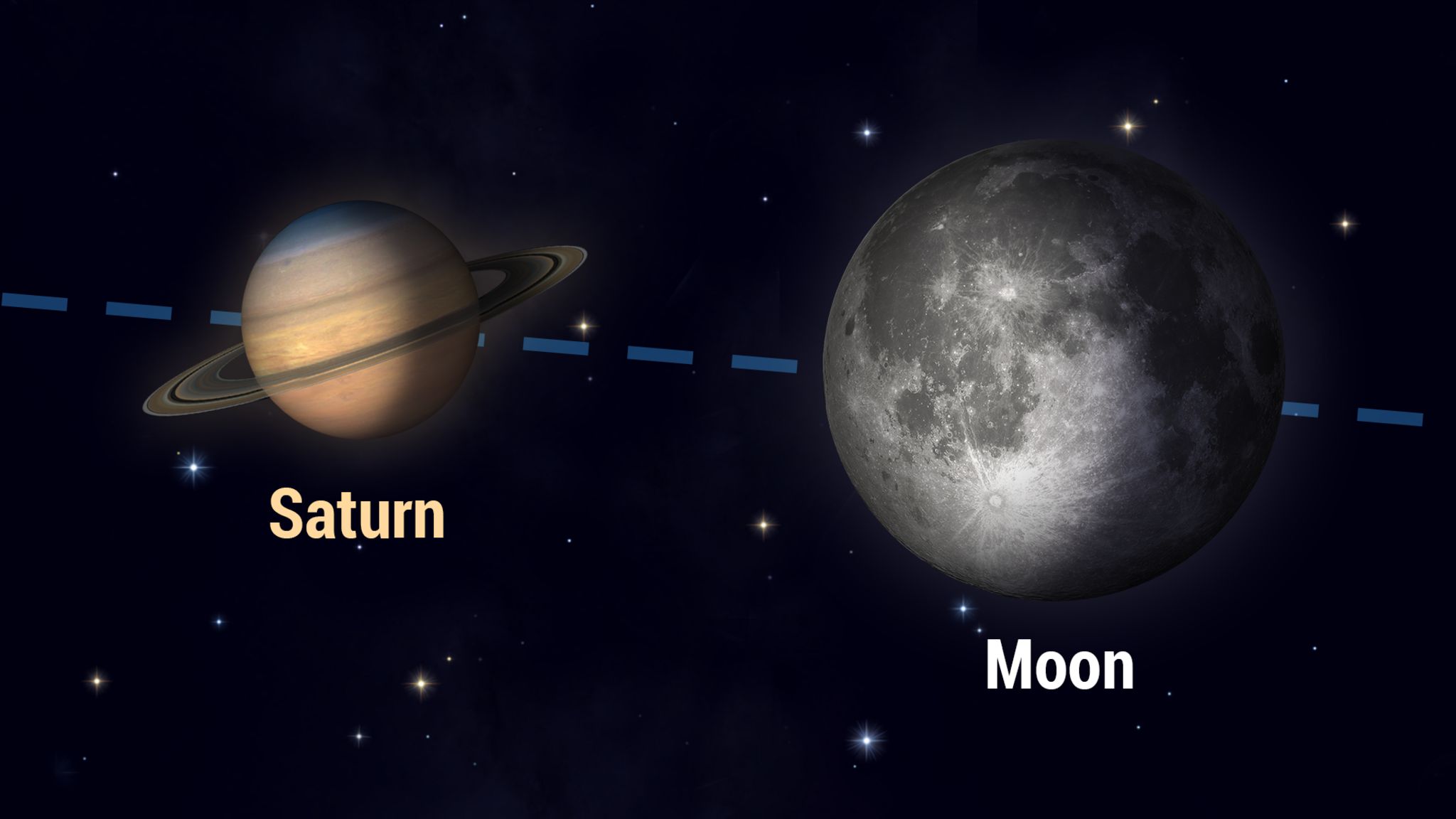Stargazing Forecast for this Week
After Friday’s full phase, the moon will wane and rise later (after midnight) with each passing day this week. As it moves into the latter stages of its monthly orbit around the Earth, the moon will become visible in the eastern predawn sky and will pay a visit to some of the bright planets that currently reside there.
In the southeastern pre-dawn sky on Thursday morning, the almost last quarter moon will land less than 3 finger widths to the right of yellowish Saturn, which will rise after 2 am local time. If you are outside a little earlier, look for the Teapot-shaped stars of Sagittarius (the Archer) positioned about a fist’s diameter to the lower right of the ringed planet and moon. The pairing will fit nicely into the field of view of binoculars, and make a nice photograph. Half a day later, at 13:00 GMT, observers in Eastern Australia and New Zealand will see the moon pass over, or occult, Saturn.
On Friday, the moon will officially reach its last quarter phase, when it will be half illuminated, on its western (our left-hand) side.
Mars will continue to be easily visible for an hour after dusk every evening this week. Once the sky has darkened, look for Mars as a medium-bright, reddish pinpoint of light sitting less than one-third of the way up the western sky. Mars has been slowly shrinking in size and brightness as we increase our distance from it little-by-little. The bright reddish star Aldebaran will be sitting about a palm’s width below Mars this week. Don’t confuse them - it’s brighter than Mars.
On Friday evening, Mars’ orbital motion will carry it closely past a clump of three open star clusters (NGC 1746, 1750, and 1758). If your sky is dark enough, your binoculars might show a concentration of stars just to Mars’ lower left. The best time to view should fall around 10 pm local time, when the sky is darker and Mars is higher.
During this week, the very bright planet Jupiter will rise over the southeastern horizon a little bit after midnight local time. By 6 am, Jupiter will remain visible in the lower part of the brightening sky, over the south-southwestern horizon.
Clear skies and happy hunting!
